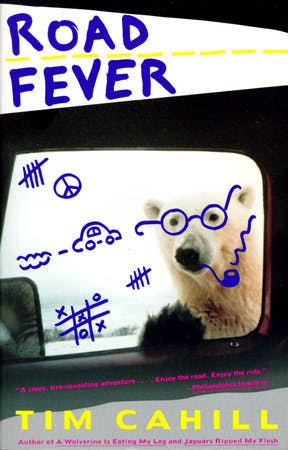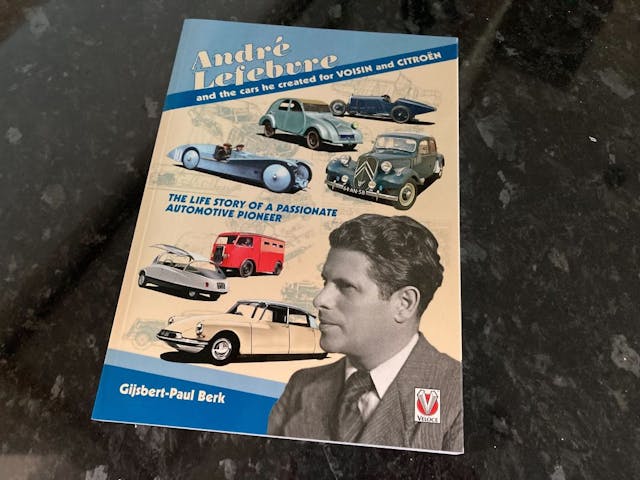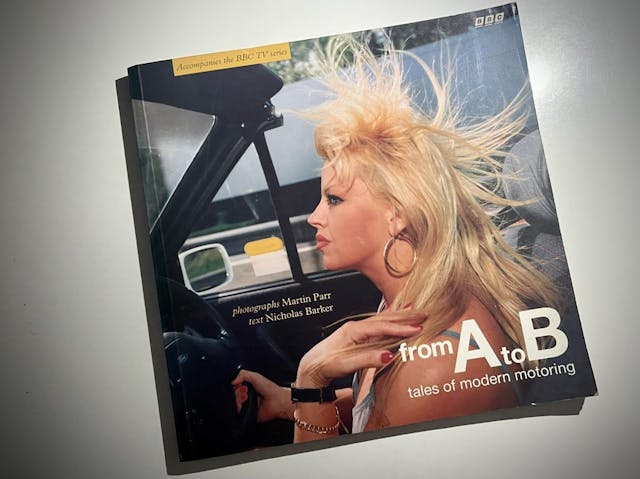8 of the best car books we’ll be reading this Christmas
Need a gift for a gearhead? Or a great read for yourself? Here are eight recommendations from Hagerty UK’s motley crew of contributors, just in time to make the Christmas mail.
Encyclopaedia Britalicar: The Story Of British Cars & Italian Design

This is a topic no one else has ever bothered to tackle before. Or, maybe, they considered it and gave up almost immediately, because the labyrinthine scope of how the Italians have shaped British cars is just too complicated.
Mr. Rees finally decided to do the job properly. I certainly don’t envy him, sitting down and starting at AC, with myriad marques and design houses ahead to untangle. But he’s done an amazing job of pulling everything with its roots in the West Mids, Crewe, Dagenham, Hethel, and Newport Pagnell into the orbit of sophisticated (and occasionally awful) Italian styling.
A sensational galaxy of images throughout shows things like a Ghia-designed Armstrong-Siddeley and a Vignale-enhanced Vauxhall Viva that I’ve never encountered anywhere else. The inner nerd scampers through it like a tot at a soft-play center.
Yet the value to understanding the complicated, 900-miles-apart relationships between BMC and Pininfarina, or Triumph and Michelotti, is enormous. In fact Chris Rees’s hours spent with Edgardo Michelotii unraveled the stories behind many Anglo-Italian masterpieces that you won’t find anywhere else. And at 304 pages, you won’t get car design cold turkey ’til the new year. —Giles Chapman
Road Fever

Long before the Top Gear adventure specials and The Grand Tour there was Road Fever. This tale by American author Tim Cahill of his attempt, alongside Canadian adventure-driver Garry Sowerby, to set a Guinness World Record for the fastest drive across the spine of the Americas from Tierra del Fuego to Alaska, inspired so many to embark on epic drives of their own.
Behind the wheel of a 1988 GMC Sierra, a truck “for upscale cowpunks” according to Cahill, the duo travelled 15,000 miles, crossed 13 countries and became experts in navigating the sketchy Pan American Highway, along with the minefields of Latin American bureaucracy.
They did it without satellite navigation or mobile phones in the midst of coca-wars and rebellions, and they did it with great humor. Re-reading it today (or listening to the audio book) is every bit as inspirational as it was 30 years ago and has got my mind racing on road trip ideas for 2023, as I’m sure it will yours as well. —Nik Berg
The Past and the Spurious: The Case of Legitimacy in Historic Cars

The question of legitimacy in the classic-car world is one that can end up being decided in the courts. When the provenance of some classics, particularly very expensive cars and those with a racing past, can add a zero to the vehicle’s value, disputes and sharp practices are not unheard of and can even boil over into the mainstream press in the worst cases.
Paul Griffin is uniquely qualified to look at what turns out to be a fascinating topic, as he’s a retired lawyer with a keen interest in classic cars and historic racing. Griffin has turned his professional mind to writing a book that is as much a philosophical discussion of the “Trigger’s Broom” theory as it is a compilation of case studies including some notorious instances such as the Ferraris of Lord Brocket. Away from these more sensational cases, Griffin’s analytical approach is just as thorough and entertaining.
As many classic cars morph from being machines to be driven and enjoyed into art works to be displayed and, dispiritingly, financial assets to be tucked away, The Past and the Spurious is a pertinent read. It also happens to be wry, informative, and designed and laid out with care, all of which elevates it into an essential reference book. —Alisdair Suttie
Inside the Machine: An engineer’s tale of the modern automotive industry

Finally, this year we learned the much-delayed details of the European Commission’s proposals for Euro 7 car emissions and the industry reeled. So should we. The vague deadlines, lack of testing conditions, get-out clauses, and sheer technical illiteracy of these new standards will prove impossible or at least incredibly costly to meet and could well auger the end of the combustion engine well before Europe’s and the UK’s deadlines.
Where were the engineers? The folk who truly understand how to turn the politician’s airy fantasies into working reality and with the wisdom to tell them when it simply can’t be done? Apparently, they weren’t consulted for Euro 7, which is where this book comes in.
David Twohig is a clever and humane man, a graduate electronics engineer from University College Cork, who got a job at Nissan’s European Technical Centre at Cranfield and who has since worked at the forefront of modern car engineering for the Nissan Renault Alliance. He also writes indecently well and, in this book, he cracks open a usually locked-and-bolted door to reveal the inside workings of the modern car industry, explaining what it takes and how difficult it is to design, engineer, and build a successful automobile—in this case the Nissan Qashqai, Renault Zoe, and Alpine A110.
What he truly understands is the freedom and mobility which motorcars deliver to us all and the special relationship we have with these machines which raises them so far above a fridge or mobile telephone. In a world of increasingly draconian legislation about the cars we drive and when and where we can drive them, it might just be essential reading for those who seek to shape the rules. It’s certainly my book of the year. —Andrew English
André Lefebvre and the cars he created for Voisin and Citroën

It happened slowly, and without me really noticing, but at some point over perhaps the last five years or so I’ve gone from officially being a young person to being middle-aged. The main indicator of this is that I now absolutely cannot wait for the gifts any young person dreads receiving at Christma—socks and books.
One (book, not pair of socks) I can recommend as a stocking-filler is Gijsbert-Paul Berk’s book on André Lefebvre, published by Veloce. Lefebvre is intrinsically linked with some of the most significant automobiles of the first half of the 20th century, predominantly French (and specifically Citroën), and while it naturally can’t go into deep detail on every one, this book does put them nicely in context.
It starts with his work with Gabriel Voisin—and includes the brilliant but also sadly unsuccessful “Laboratoire” grand prix racer—and covers vehicles like the Citroën Traction Avant, 2CV, and DS, concluding with some of the forgotten projects he worked on over the years. If you consider yourself an enthusiast of French cars and the brilliance of their engineering, it’s a must. —Antony Ingram
Chip War: The Fight for the World’s Most Critical Technology

Over the last couple of years the topic of conversation has often been about the shortage of new cars available to buy, year-long waiting times, reduced functionality, cancelled orders, and the rising price of used cars. Accepted wisdom blames a shortage of microchips, but like many others, I’d nod in agreement without understanding the big picture around global shortages of semiconductors. Chris Miller’s Chip War captures that big picture.
Miller is an associate professor of international history at the Fletcher School at Tufts University, in Massachusetts, America. He also writes for some of the nation’s broadsheet newspapers. Chip War takes the reader back to the dawn of the microchip, tracks its evolution, gives a sense of its significance in today’s society and, slowly but surely, leaves you with a feeling of unease about America and China’s competing interests over semiconductors. China, which is said to spend more money importing chips than on importing oil, is trying to catch up with the USA’s lead in the field—and it cares about so much more than making sure its national car industry has what it needs.
As governments—for better or worse—steer car makers toward their next area of opportunity, namely the widespread adoption of self-driving cars and the value of associated data surrounding the captive audience aboard, all against a backdrop of increased military investment, you may find yourself agreeing with Miller’s provocative prediction that a reckoning is coming. —James Mills
The Timeless Racer: Machines of a Time Traveling Speed Junkie

The premise is fairly simple: What would happen if a talented racing driver was able to skip generations and race in various eras? This premise allows graphic designer Daniel Simon to flex his creativity and speculate about the motorsport of the future. Using the fictional Masucci team and time-traveling driver Vic Cooper as the focus, we join the ride through time from 1916 to 2615 and get to marvel at the marble-splattered endurance racing machines of the future.
Written as though it was entirely real, there are articles about the cars, designers, and more in the Masucci world.
Episode 1 covers the Masucci X5 and X6 of early ’80s, and the X7 of 2027—now a very near future, where we can indulge in Simon’s fantasy world and marvel at the cars and tracks of an unlikely, but wonderfully fantastic, endurance racing future.
If this book is really to fill a stocking, however, you’d better get one with plenty of give—it measures a shelf-filling 36 x 31 cm. —Damien Cross
From A to B: Tales of Modern Motoring

You’ve almost certainly heard of the television series. You’ve probably watched some of the episodes on YouTube. But have you got the paperback published to accompany the BBC series first broadcast in 1994? I didn’t—until I used eBay to fill a gaping hole in my library.
It’s not overflowing with words; you can finish the book in the time it takes to peel the sprouts and stuff the turkey. You’ll spend longer marvelling at Martin Parr’s wonderfully evocative photos, which act like a snapshot in time, when trim levels were a badge of honour and Little Chef Early Starters were the dish of the day.
Indeed, Over the Moon with the Cavalier was the most memorable episode and the one you need to watch over Christmas. Who can forget the chap who was brought to tears by a Maestro? “Obviously my wife knew that I was getting a new company car. When I told her it was a Maestro Diesel Clubman, we both literally sat down and cried—we physically cried. Going from the Vauxhall Cavalier down to this, I just wondered what I’d done to deserve it.” —Gavin Braithwaite-Smith
Check out the Hagerty Media homepage so you don’t miss a single story, or better yet, bookmark it.



I would recommend a book I just picked up. It is a short but informative read.
The Dealer by Jim Ciardella. It is the story of the man who started and owned Las Gatos Ferrari Americas largest Ferrari dealer.
I have always been a Ferrari fan but you can see in this book the effects of Fiat on the brand after Enzo died.
It turns to be a very cut throat deal.
It makes me take pause on buying a Ferrari from a Dealer.
This is an interesting list. I’m putting almost all of them on my reading list for 2023!
Here’s one not to miss: “It Came With Oil”, a series of shorts by a great mechanic, Alan Cowan, of Falcon Works in Tucson, AZ.
I know this article is from the UK, but Rob Siegel who write here weekly has quite a few books. I’ve read “Ran When Parked” and would recommend it. I have a one or two more from him also that I haven’t read yet. I would be interested to know if any other Hagerty contributors have books or write articles elsewhere?